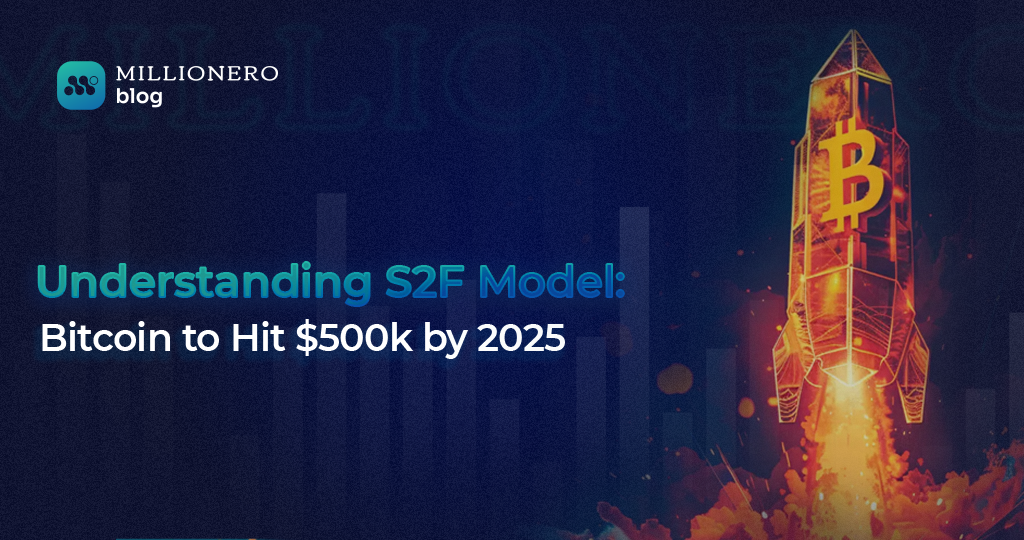
PlanB’s Bitcoin Prediction
According to renowned analyst PlanB, known for the Stock-to-Flow (S2F) model, Bitcoin is poised for a significant price surge despite recent fluctuations.
In a recent post on X, PlanB predicts that BTC could increase seven to ten times its current value, potentially reaching anywhere between $400,000 and $600,000 by August 2025. He ties this prediction to Bitcoin’s recovery from the 2022 bottom.
Industry Reactions and the Bullish Sentiment
This bullish forecast is based on historical patterns, particularly Bitcoin’s 200-week Moving Average, which has shown consistent price jumps. Since 2022, Bitcoin has already risen fourfold, and PlanB suggests that another major leap could be imminent. Industry reactions to PlanB’s prediction have been largely optimistic, though some prefer more conservative estimates of $120,000 to $160,000.
Despite varying views, there is strong bullish sentiment, with many believing that once Bitcoin surpasses the $70,000 resistance, a significant price run is likely.
Understanding the Stock-to-Flow Ratio
The SF ratio has historically correlated with Bitcoin’s price, making it a popular methodology for forecasting future BTC price valuations.
Bitcoin is the world’s first and most well-known scarce digital object. Like silver and gold, its supply is limited — only 21 million coins will ever be in circulation.
The stock-to-flow concept capitalizes on Bitcoin’s scarcity to increase its value. By assessing Bitcoin’s digital scarcity, the stock-to-flow ratio forecasts its value.
Is Bitcoin stock-to-flow accurate for price predictions? Here’s a closer look at the stock-to-flow concept and how it works, as well as how to invest in crypto using the stock-to-flow model.
The Principle of Scarcity in Bitcoin’s Valuation
Scarcity creates “unforgeable costliness” and assigns intrinsic value to an asset, according to Nick Szabo, an American cryptographer and computer scientist.
The technology behind Bitcoin ensures that the number of new coins decreases over time, increasing scarcity.
Bitcoin Halving and Its Impact on Price
Miners receive a “block reward” for validating transactions, producing a proof-of-work. Every 210,000 blocks, the block reward is halved — a process called the “Bitcoin halving.”
From 50 BTC in 2009, it was reduced to 25 BTC in 2012, 12.5 BTC in 2016, and 6.25 BTC in 2020. The next halving will occur in spring 2024.
Historically, Bitcoin halving has driven BTC prices higher. As Bitcoin’s supply tightens, scarcity measures can help investors decide when to invest in BTC.
How the S2F Model Bitcoin Works
The stock-to-flow model predicts value changes simply by comparing an asset’s current stock to the rate of new production. A higher ratio indicates greater scarcity, often leading to a higher price. A pseudonymous Dutch former institutional investor known as “PlanB” popularized the Bitcoin stock-to-flow ratio.
Initially used for gold and silver, the model is now adopted by the crypto community, especially for BTC. Bitcoin, like these commodities, is rare and costly to produce, making supply and flow crucial in determining its value.
Technological advancements in precious-metal mining increase gold production rates. However, Bitcoin’s production remains steady due to halving events.
Moreover, unlike gold and silver, cryptocurrencies cannot be converted into items or components. Thus, each crypto token represents potential supply since investors can sell at any time. A high stock-to-flow ratio in crypto represents relative value, not absolute.
This regular inflow makes Bitcoin’s stock-to-flow ratio more predictable, but it isn’t always perfect. As Bitcoin matures, macro factors will increasingly influence its price.
The Formula Behind Stock-to-Flow
The stock-to-flow ratio compares the total available stock of a commodity to its annual flow of new production. At present, Bitcoin has a stock of 18,847,331 BTC, which is 89.74% of the total supply, with an annual flow of 328,500 BTC.
Using the stock/flow formula gives an SF ratio of 57.374 (18,847,331/328,500). Mining the current total BTC supply would take roughly 57 years, without considering maximum supply and halvings.
Bitcoin halvings increase the S2F ratio by enhancing scarcity, pushing Bitcoin prices higher. This metric is crucial for understanding why Bitcoin is seen as a currency rather than a commodity.
Limitations of the Stock-to-Flow Model
The S2F Model Bitcoin has shown some historical alignment with BTC prices, but it has notable limitations in forecasting future digital asset values.
The model only considers Bitcoin’s supply, ignoring the demand side. Supply and demand are the two most fundamental factors in asset pricing. Therefore, even though BTC’s SF ratio rises every four years due to halvings, its price could drop sharply if demand declines.
The Bitcoin stock-to-flow model also overlooks other factors that could impact prices, such as:
- Volatility: Despite decreased volatility over time, Bitcoin still faces major price swings. Significant losses during volatile periods can trigger panic selling, leading to a steep drop in BTC prices.
- Black Swan Events: These are unpredictable events with major impacts, particularly on asset prices. For Bitcoin, a significant regulatory crackdown could be a black swan, possibly causing a steep price drop.
Conclusion: Using S2F Model in Investments
Despite its flaws, understanding how to use the S2F Model Bitcoin can be valuable in crypto trades. Historically, a rising stock-to-flow ratio correlates with increased asset value, aiding investment decisions. A high ratio, like 50 or more, suggests intense scarcity, implying potential price increases.
Investors might choose to sell some of their holdings to profit from high prices or buy more when the ratio is low but expected to rise. While it has limits, the stock-to-flow ratio remains a useful tool for forecasting in crypto investments.
Ready to explore more on Bitcoin and crypto trading? Visit the Millionero Blog for expert insights, latest market updates, and essential strategies to boost your crypto journey. Stay informed, stay ahead!

